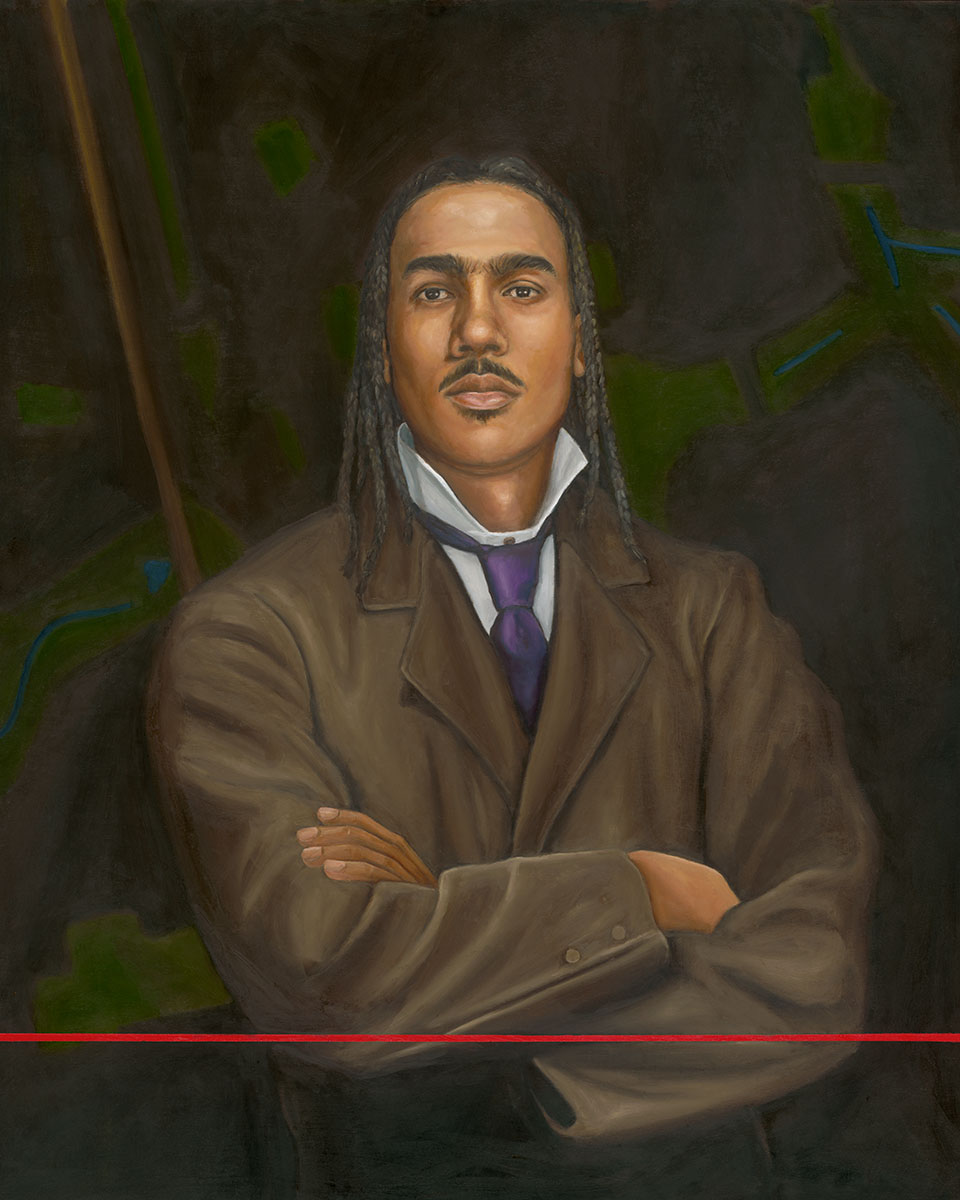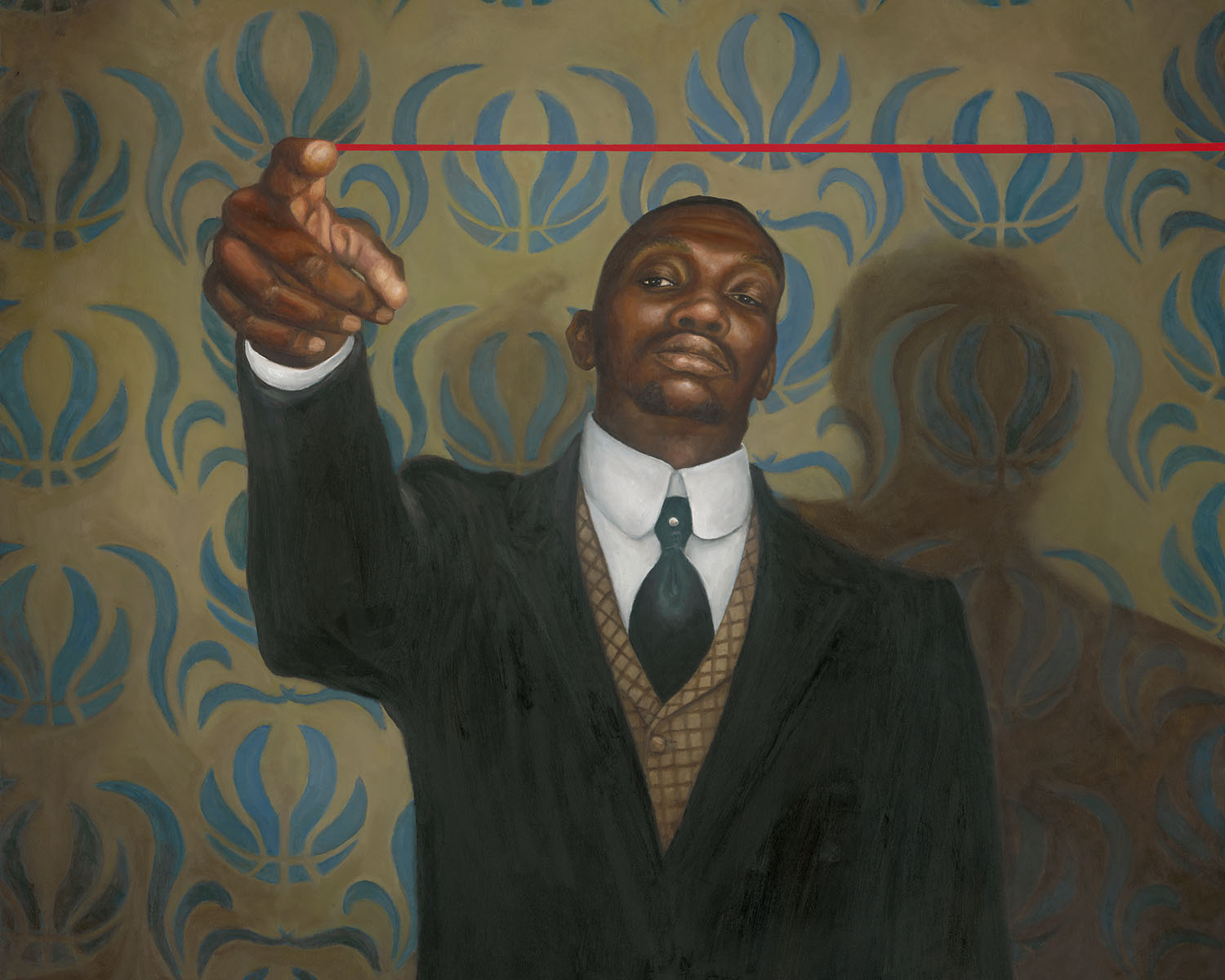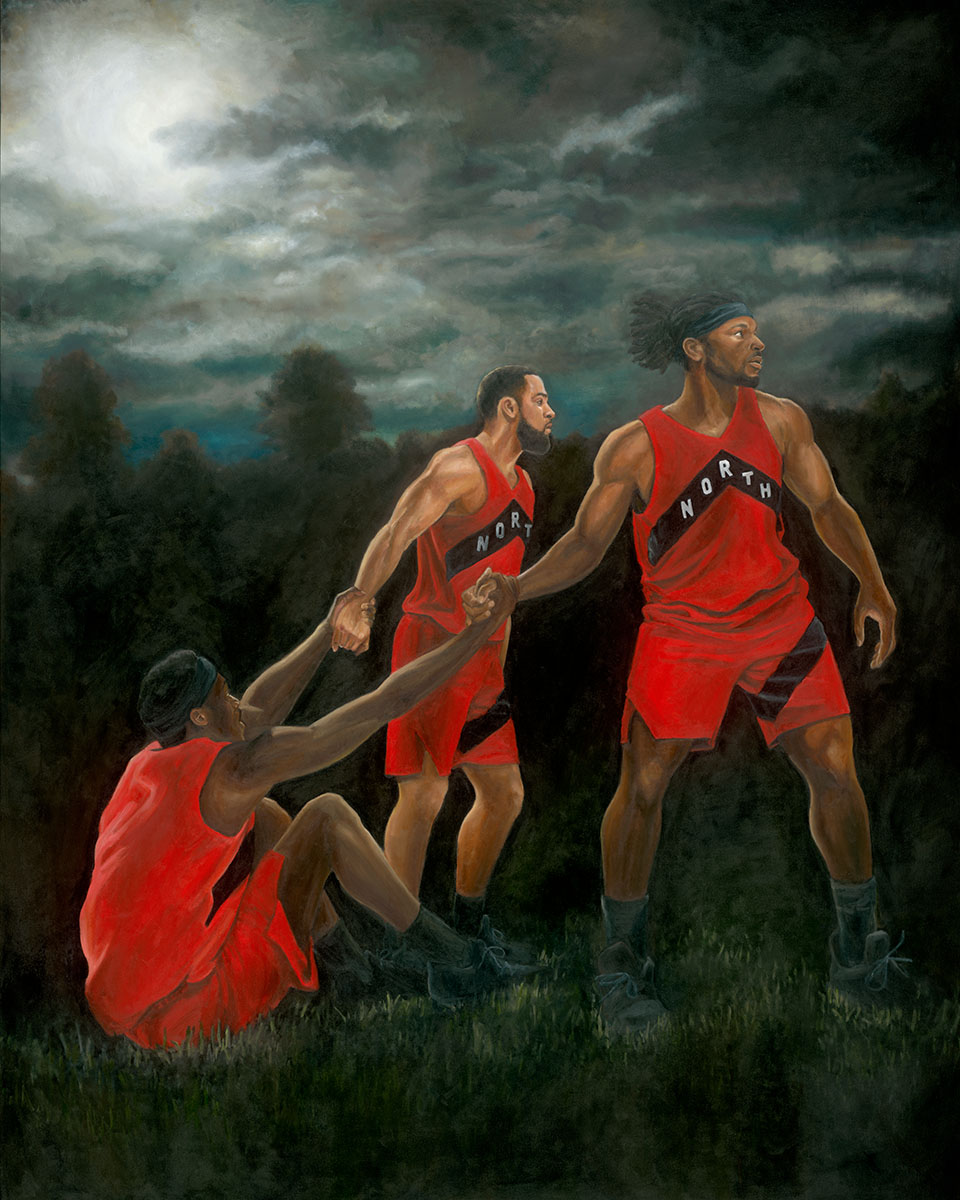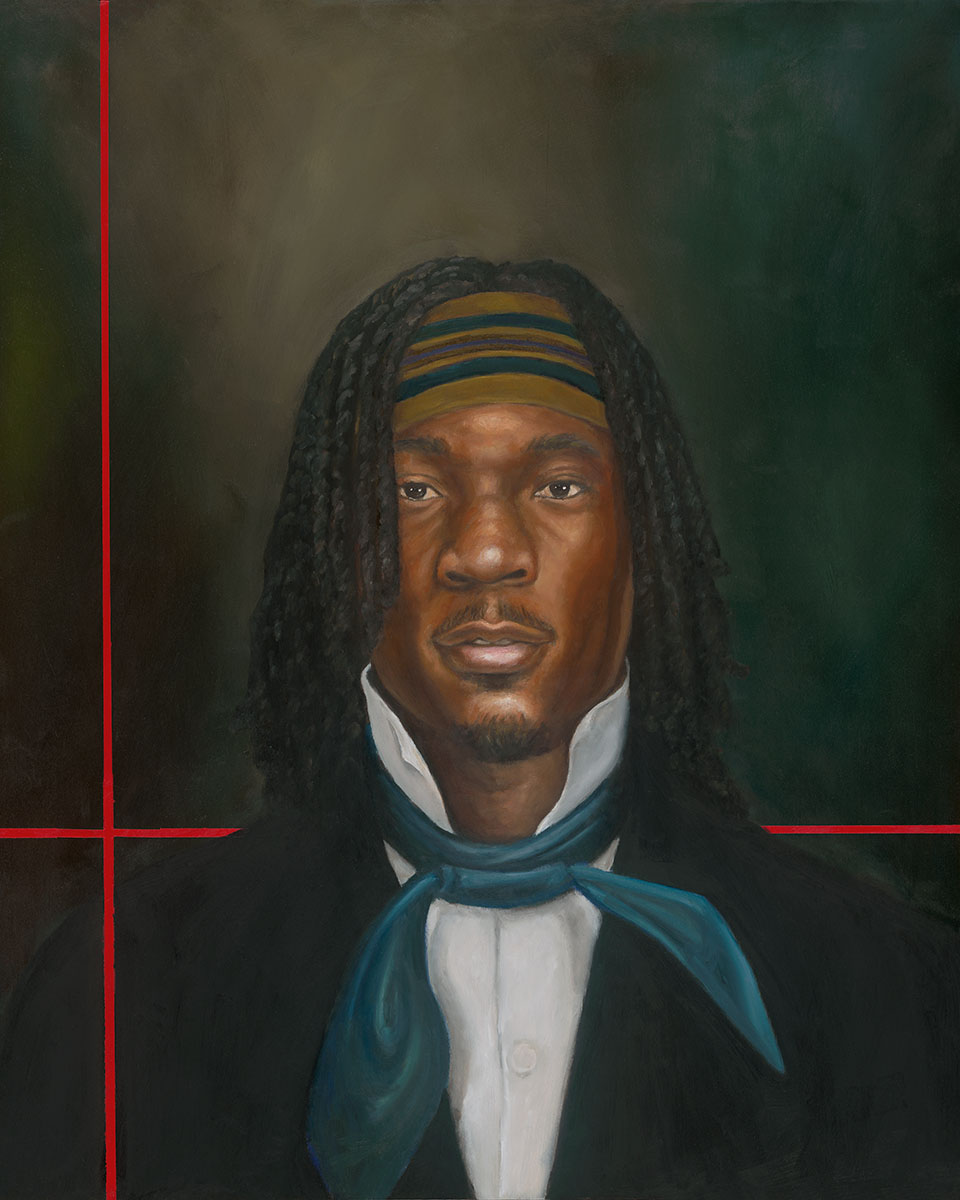
Sports can be isolating. Through their framework, their schedules and storylines, they provide a wholly separate space where the real world doesn’t always get in. Some fans embrace the detachment, treating sports as a willful escape. Where this approach gets troublesome is when it attempts a forced cleaving of real-world issues from the real people whose day jobs happen to be elite athletes.
In the NBA especially, where Black men represent the majority of athletes, a disconnect from the social, economic, and political issues impacting the world is largely impossible. We’ve seen it in recent seasons through social justice movements and player protests, as well as in the honest and raw expressions of grief and frustrations from players when real-world tragedy overlaps the everyday minutia of a basketball season.
It’s why Dis/Mantle — an Afro-futuristic immersive exhibition featuring the work of visual artist Gordon Shadrach that the Toronto Raptors worked with the City of Toronto’s Awakenings program as a community partner to present — makes such a compelling case for overlap. Co-curated by Umbereen Inayet and Shadrach, the exhibition is staged throughout Toronto’s historic Spadina Museum, an estate and sprawling grounds built in 1866 that remains intact in the heart of the city. The show presents an alternate history where Louisa Pipkin, a freedom seeker who fled enslavement in the United States and worked as a laundress for the estate’s former homeowners, instead owned the property herself.
Most of the rooms in the house’s two-floor footprint were converted with installations and live components, like a culinary feature by Toronto chef Roger Mooking that showcased Afro-Caribbean ingredients in the house’s kitchen and served dishes across the grounds. Herbalist Alessandra De Oliveira set up a small apothecary with plants and tinctures traditional to Afro Caribbean culture; ceramic artists Sharon Norwood and Christine Nnawuchi had work featured in table settings and imaged objects that may have been meaningful in Mrs. Pipkin’s life.
The most prominent and striking work on display, however, were the large-scale portraits by Shadrach. Of the 17 oil and acrylic panels, seven featured current Raptors players. Shadrach, who worked in a studio to complete the works, induced nods to decor features — wallpaper patterns, lighting — in every painting so that it looked as if each had been where it was hung for decades.
John Wiggins, the Raptors vice-president of organizational culture and inclusion, admitted he’d walked by a few of the paintings on his initial walkthrough. “I walked right past Dalano’s painting,” Wiggins chuckles, “because he looks like he’s been here since 1866.”

All paintings feature the continuity of a stark red line to represent redlining, the discriminatory practice that withheld services to residents of certain neighborhoods based on their race or ethnicity.
“The idea with the house is it’s meant to be a house where people of note might have come through, and people would have spoken, or maybe their direct descendants of the extended family of the Pipkins, so the idea is that these are characters that would have been in the narrative of what we’re trying to create here,” Shadrach told Dime at Dis/Mantle’s opening. “So whether they’re grandchildren, or nieces and nephews, or whether they would’ve been people that would’ve come to fight with the abolitionists, it’s up to the viewer to decide, but that was the inspiration for the portraits.”
The inclusion of young Raptors players was the hope of the Wiggins, who’d heard about Shadrach’s work and had gone to visit the artist in his studio pre-Covid.
“I loved the way he was talking about Black history and Canadian history through the vision and images of athletes,” Wiggins recalls. “As I sat there, listening to him talk about where he came up with the inspiration and the artwork, it was just a captivating piece not just of understanding someone’s perspective, but also hearing the history that he was showing. And I just thought, everybody needs to hear this, and they need to hear from him.”

The Raptors included in the show — Chris Boucher, Dalano Banton, Justin Champgnie, Gary Trent Jr., Malachi Flynn, and Precious Achuwa — are some of the team’s youngest, and newest (as of the 2021-22 season) players. Shadrach says he had the sense that the team wanted to find and help these athletes immerse themselves in the local community.
“So the focus was on including these players as a stepping stone to building something,” Shadrach says.
Wiggins chuckles when he admits “the Raptors bring people to the party,” but knowing he could leverage the popularity of the franchise, especially its younger fans in the city, with the show meant a tangible means of support the team could lend to an important subject.
“I think this is just going to show how powerful art and culture is in helping talk and teach and explain stories,” Wiggins says, confirming that the partnership with Shadrach has made the Raptors franchise keen to continue exploring the contemporary art space.

“Everyone doesn’t just come to a basketball game, everyone doesn’t just learn by listening, learn by you shouting at them, so we knew that there are other people who are basketball fans that also enjoy art and culture, the same way we know there are different types of fans within the different demographics we have,” Wiggins continues. “Youth learn through art as well. So this was very important for us.”
The ongoing COVID pandemic complicated Shadrach’s typical process for his portraits. Because of the city’s restrictions, Toronto players were unable to sit with the artist in his studio and later, when restrictions eased, schedules didn’t allow for it. Even photoshoots were prohibited. Shadrach came to get to know each of his subjects through their social media presences, or the photos they were sending through to him, where little glimmers of their personalities were able to come out. For all the pivoting and flexibility required, Shadrach says he now can’t imagine the portraits, or the process, being different.
Given the opening of Dis/Mantle coincided with the now-infamous summer runs in L.A. put together by Toronto’s own development coach, Rico Hines, none of the players in the show were able to be there. Wiggins, however, is emphatic that when the time comes, whether prior to Raptors training camp or after, the team will make arrangements “for our entire organization — coaches, staff, front office — to come out and really just take some time to experience it.”

Shadrach lights up at the question of whether he’ll be in attendance, “I hope so!” He echoes the sentiment of Wiggins in what the show, which runs until the end of 2022, can mean for the team’s involvement in contemporary art in Toronto, specifically when it comes to the broader impact on local communities.
“What’s really fascinating is to develop something with a really strong arts lens. It’s not always about the sports,” Shadrach says with a chuckle. “Not that sports is bad. I’m just saying, it’s nice to see a wider scope of entrance and accessibility for different people in the community.”
That sports, and basketball in a city that loves it, can provide a gateway into art — and that art, in turn, can turn history into something viscerally, experientially accessible — shows the power and necessity not just in examining the past, but reimagining the future. Basketball becomes a bridge, art the vehicle. Isolation goes out the window and new communities, and fans, come in.
